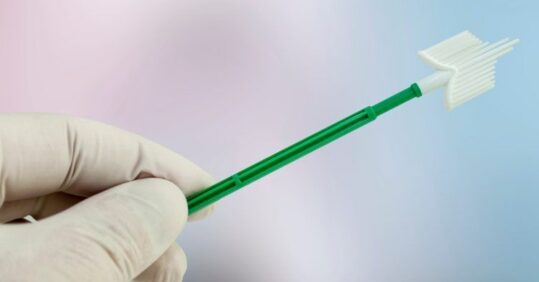Do-it-yourself human papillomavirus (HPV) tests could be a ‘game changer’, enabling a million more women in England to participate in cervical screening over the next three years, researchers have suggested.
Researchers from King’s College London (KCL) concluded that offering self-sampling kits to women who were at least six months overdue for their cervical smear could result in 400,000 more women being screened for cervical cancer each year.
Supported by Cancer Research UK, the YouScreen trial is the largest self-sampling trial conducted for cervical cancer. It offers women the chance to screen themselves at their GP surgery or in the privacy of their own home.
The trial’s results, published in eClinicalMedicine, highlight a simple and effective way to increase the number of people taking cervical smear tests.
Related Article: Smoking rates fall most significantly in the North of England
Cervical cancer is highly preventable by screening and treating pre-cancer. However, cervical screening participation has been falling in England for over two decades and women who do not regularly attend screening appointments are at the highest risk of developing cervical cancer. Almost a third of eligible women are not being routinely screened; in some parts of London, this is as high as 50 per cent.
Self-sampling has been shown in previous studies to be as effective in detecting HPV as smear tests taken by healthcare workers and can remove some barriers for women who would like to be tested but are put off by the standard cervical smear process.
In partnership with the NHS Cervical Screening Programme, the researchers tested the ‘DIY’ kits across 133 GP surgeries in North Central and North East London, offering over 27,000 unscreened and under-screened women HPV self-sampling kits between Jan 2021 and Nov 2021.
People in the trial used a vaginal swab to take their sample either at home or at their GP practice. Samples taken at home could be posted for free directly to the laboratory for testing. If HPV was detected in any samples, a follow-up test was required.
The self-sampling intervention resulted in a 22 per cent increase in non-attenders screened per month, with over 8,000 people using and returning the kits for testing. The women who tested were all between 25 and 64 years of age, with 64 per cent being from ethnic minority groups and 60 per cent from deprived populations. Women are more likely to use the self-sampling kits when they are offered at their GP practice. Fifty-six per cent of women self-sampled at their GP surgery, compared to 13 per cent when the kit was mailed directly to their home.
Lead investigator Dr Anita Lim from KCL said: ‘Self-sampling has been hailed as a game-changer for cervical screening, and we now have evidence in a UK population to show that it is.’
Related Article: Boost your CPD with the redesigned Nursing in Practice 365 platform
She added: ‘It is crucial that we make cervical screening easier by introducing innovations like self-sampling, alongside the current cervical screening programme, to help protect more people from this highly preventable cancer. Self-sampling can do this by offering people choice and convenience.’
The trial showed that the ‘DIY’ test is popular with both women and GP practices, and the self-sampling kits enabled screening for a wider population.
Dr Lim added: ‘It’s encouraging that we received self-samples from groups that have been historically underserved, including people from deprived and ethnic minority backgrounds, LGBTQI+, people with learning disabilities and victims of sexual violence.’
Mairead Lyons, a senior consultant from KCL who was involved in the trial, described self-sampling as a ‘win-win’ for everyone.
Related Article: Thousands of patients not invited to cancer screenings due to ‘incomplete’ GP registrations
She added: ‘YouScreen demonstrated that for GPs, nurses and other healthcare professionals at general practice, being able to offer self-sampling to under-screened women when they attend for other appointments is a pragmatic way to deliver cervical screening to those at risk.’






